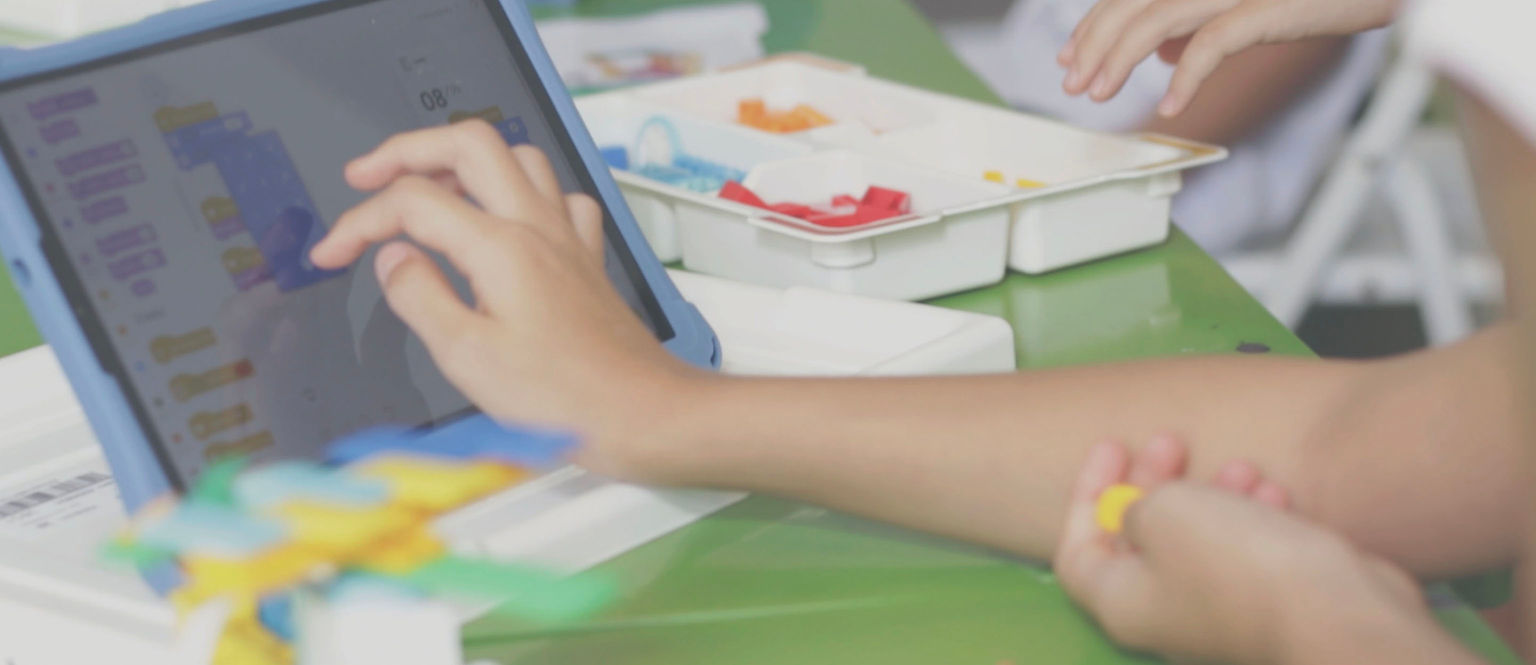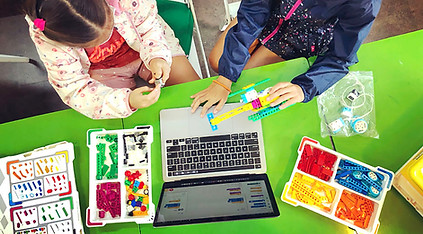
Curriculum
The STEM only robotics and coding
The programmes are designed to inspire students to develop an interest in STEM-based subjects through a hands-on, fun and experiential approach to engineering and computer programming. Each lesson is specifically designed to expose the students to a range of subjects from physics and maths to ecology and biology while cultivating a range of essential skills in creativity, critical thinking and communication.
The STEM + Robotics and Coding curriculum was created in response to continued growth in new technology and the importance of preparing young students for the industries of the future.
The curriculum is divided into four separate programmes: Beginner, Intermediate, Intermediate + and Advanced.
Each programme delivers 24 hrs of teaching content, and the duration of each lesson is approximately 1.5 hrs.
Students will be grouped according to their age and ability with a class size of between 8-12 students.
16 hrs
16 hrs
The Robotics and Coding Curricula
16 hrs
Lower Primary
Curriculum
Upper Primary
Curriculum
6-8 Years
24 hours class time per programme

Beginner
Programme
Lego® BricQ Motion

Intermediate
Programme

Intermediate +
Programme
Lego® Spike™ Essentials

Advanced
Programme
96 hours class time for the complete Lower Primary Robotics and Coding Curriculum.
9-11 Years
24 hours class time per programme

Beginner
Programme
Lego® BricQ Motion

Intermediate
Programme
16 hrs

Intermediate +
Programme
Lego® Spike™ Essentials

Advanced
Programme
96 hours class time for the complete Lower Primary Robotics and Coding Curriculum.
Lower Primary
Age Groups : 6-8 years
24hrs total class time per programme.
1.5hrs per class providing 16 lessons in total.
96hrs of teaching content to complete the curriculum.
The Lower Primary Robotics and Coding Programme uses the Lego® Spike™ Essential hardware, where they will learn to build and code models using icon blocks, a simple drag-and-drop programme, perfect for younger students. Following this, students will progress to using the MIT-designed Scratch® coding software; a word block programme that provides a visually intuitive platform for students to learn, explore and apply 100s of programable functions to their models. As students progress through the curriculum they will graduate from icon to word block coding and be introduced to more complex programming functions. In addition, the students will be given more creative freedom to design their own models and complete more advanced and challenging practical tasks.
Fun and Creative Units
Each stage of the programme is supported by a theme, from Amusement Park Rides to Quirky Robotic Creations. These themes provide a fun, creative narrative that engages the students with team challenges, promoting critical thinking and encouraging investigation and experimentation.
Building on STEM
Each model that the students build, programme and apply to a challenge is seen as an opportunity to enhance their learning experience in science, technology, engineering and maths. For example, students will learn about propulsion when coding a helicopter, physics when designing a carnival game and maths when coding the distance travelled in a snowmobile. As a result, we have designed a programme that teaches coding through robotics while providing comprehensive learning opportunities immersed in all things STEM.
Upper Primary
Age Groups : 9-11 years
24hrs total class time per programme.
1.5hrs per class providing 16 lessons in total.
96hrs of teaching content to complete the curriculum.
The Upper Primary Robotics and Coding Programme uses the Lego® Spike™ Essential hardware and the easy-to-use drag-and-drop icon block coding platform; a great way to introduce students to computer programming. Following this, students will progress to using the MIT-designed Scratch® coding software; a word block programme that provides a visually intuitive platform for students to learn, explore and apply 100s of programable functions to their models. As students progress through the programmes, they will be encouraged to work more independently and have the freedom to modify and build their own models to complete a specific project. As the students progress towards the advanced stage of the curriculum they will be design and code more sophisticated and challenging robotic models and participate in projects that explore more complex coding outcomes.
In addition to learning coding through building and designing robotic models, students will be exposed to specific learning outcomes that develop and enhance their understanding of science, technology, engineering and maths. From the physical sciences to biology from mathematics to ecology, each lesson is designed to provide an opportunity to enhance their learning experience in these important subjects. Lessons provide fun and engaging team challenges, and promote critical thinking through problem-solving tasks that encourage experimentation and investigation.
Class Structure example
Students will build and programme a model in a one and half hour class.

Introduction
The teacher will discuss the aims and objectives of today's class, briefly introducing the STEM-based subject, the model design and the coding functions that they will explore.

STEM Theme
Next, students will take part in a class discussion about today's science-based theme; for example, different ecosystems. Students will be encouraged to share ideas and express prior knowledge of the subject. Next, supported by the unit book, video and images, the class will explore today's topic in more detail. Finally, students will complete the research page in the unit book to demonstrate they understand and can identify different ecosystems.

The Build
Supported by the teacher and teaching assistant, the students will work in pairs to build their robotic model. Working on the iPads, students will follow the visual instructions on the Lego® Education Spike™ App.

Coding
Next, students will follow a visual demonstration by the teacher and learn how to apply today's coding sequence to activate a particular device of the model. Students will be introduced to a new set of coding functions with each model that they programme. Finally, the students will have the freedom to experiment and make adjustments to test and apply their code.

The Challenge
In the next stage of the lesson, students will be given a challenge. This will encourage teamwork, experimentation, critical thinking and problem-solving techniques that will involve modifying the design of the model and writing the coding to successfully complete the challenge.

Summary
Finally, through class discussion, students will review and summarize the learning outcomes of today's model build and complete the lesson by filling in the reflection section of the unit book.

Fully immersive STEM programme
The aim of each lesson is to support the building and coding of the model with additional learning opportunities to explore a range of STEM-based subjects. For example, students can learn about propulsion and physics when coding a helicopter, probability when building a carnival game or biology and ecology when exploring the Arctic on a snowmobile.
Certificate of Achievement
Go Learn STEM will provide a certificate of achievement for each programme level completed. The certificate will highlight the academic and interpersonal skills acquired through participation in the Robotics and Coding Programme.
Importantly, the certificate provides accreditation for the student's coding level and ability; providing confirmation that they have successfully learnt and applied the globally recognised Scratch® programming software.
Additional Skills
The programme is designed to encourage students to work together, communicate their ideas and work as a team on project-based activities.
Each model that they build and code has to complete a challenge that naturally involves critical thinking and promotes problem-solving skills. At the end of each lesson, students are encouraged to give feedback and summarise their experiences, therefore, developing presentation skills and building confidence.





